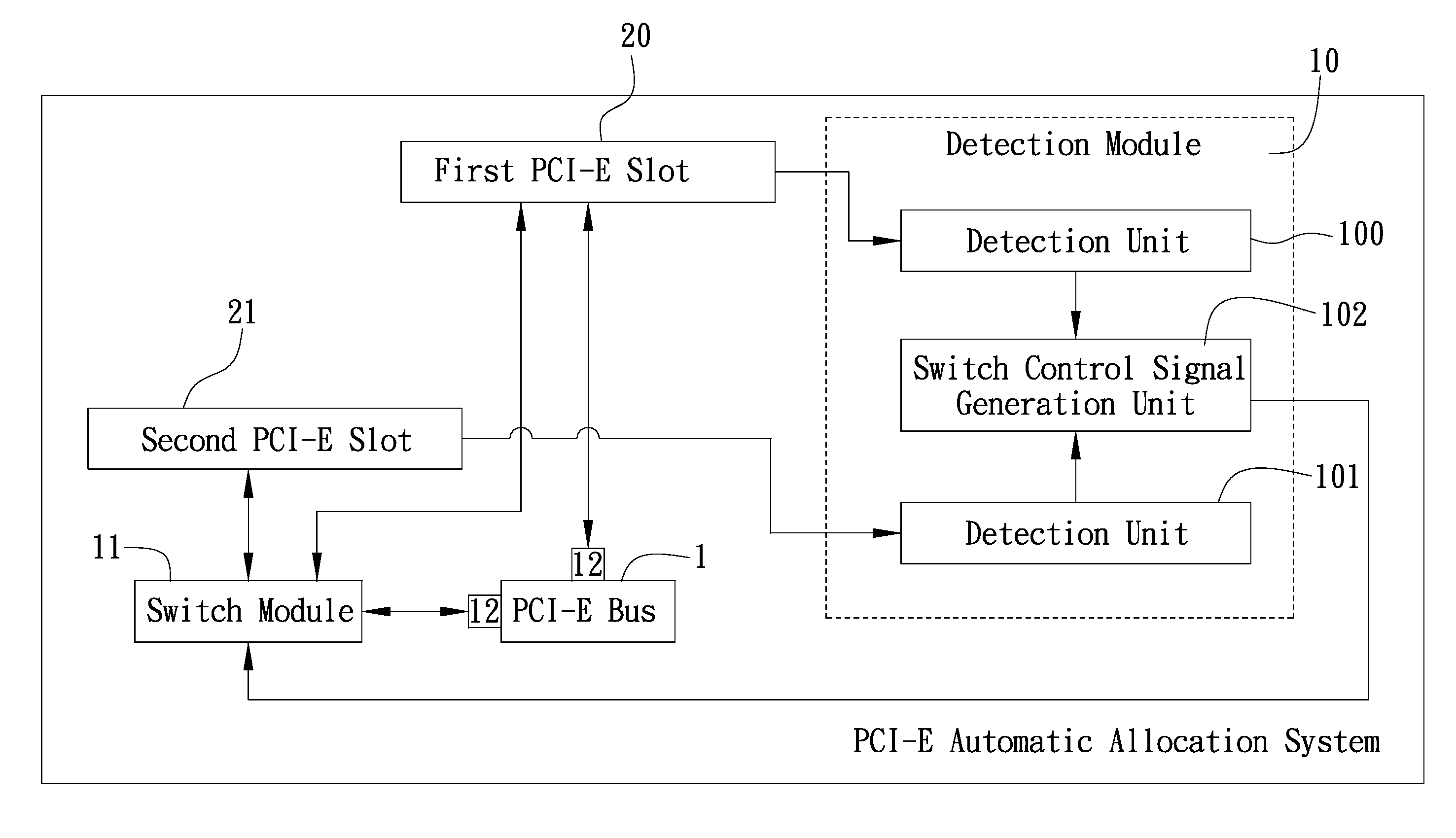PCI-E automatic allocation system
a technology of automatic allocation and allocation system, applied in the direction of electrical digital data processing, instruments, electrical apparatus, etc., can solve the problems of data loss or service interruption, inconvenient and complex aforesaid practice, etc., and achieve the effect of speeding up data transmission and slowing down data transmission
- Summary
- Abstract
- Description
- Claims
- Application Information
AI Technical Summary
Benefits of technology
Problems solved by technology
Method used
Image
Examples
Embodiment Construction
[0019]The following specific embodiments are provided to illustrate the present invention. Others skilled in the art can easily understand other advantages and features of the present invention in accordance with the contents disclosed in this specification. The present invention can also be performed or applied by other different embodiments. Various modifications and changes based on different viewpoints and applications yet still within the scope of the present invention can be made in the details of the specification.
[0020]Referring to FIG. 1, which is a block diagram of the structure of a PCI-E automatic allocation system according to the present invention. The PCI-E automatic allocation system of the present invention is applied in a computer system (not shown). The computer system comprises at least two PCI-E slots; the first and second PCI-E slots 20 and 21 are herein illustrated with a diagram, to simplify illustration and explanation. In addition, the computer system is on...
PUM
 Login to View More
Login to View More Abstract
Description
Claims
Application Information
 Login to View More
Login to View More - R&D
- Intellectual Property
- Life Sciences
- Materials
- Tech Scout
- Unparalleled Data Quality
- Higher Quality Content
- 60% Fewer Hallucinations
Browse by: Latest US Patents, China's latest patents, Technical Efficacy Thesaurus, Application Domain, Technology Topic, Popular Technical Reports.
© 2025 PatSnap. All rights reserved.Legal|Privacy policy|Modern Slavery Act Transparency Statement|Sitemap|About US| Contact US: help@patsnap.com


